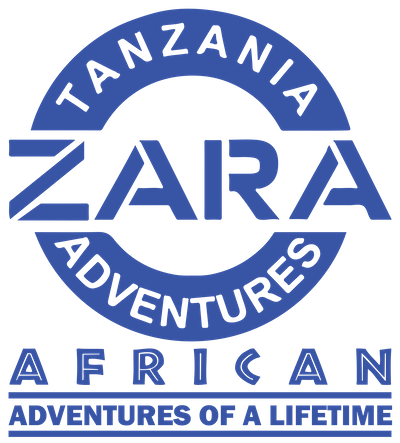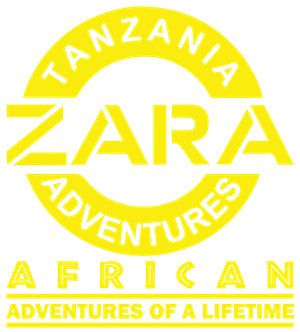The African continent is the second-largest in the world. It covers approximately 20% of the world’s landmass. Some of the wealthiest countries in Africa build strong economies on their abundant natural resources. For example, resource-rich homelands like Egypt lead in wealth. Nations like Tanzania drive growth via tourism.
Economists use different measures to assess a country’s wealth. First is their Gross Domestic Product (GDP). Another measure is by Gross National Income per person (GNI per capita). It’s important to note that the wealthy nations in Africa invest in their people and the future.
1. South Africa

Total GDP: $400 billion
South Africa is the wealthiest African state with the highest gross domestic product. Mining is one of its major economic contributors. They produce the most chromium, platinum, vanadium, and manganese. But, there is more to this nation besides its jewels. The primary market sector includes agriculture, fishing, and mining. It has a secondary market structure that focuses on construction and manufacturing, as well as a tertiary trade market. Manufacturing contributes about 15% of its gross domestic product.
2. Tanzania

Total GDP: $79 billion
Tanzania’s GDP has grown over the years. Agriculture is the basic source of income for many residents. It contributes approximately 25% to GDP. Tanzania is one of the wealthiest countries in Africa, with a significant portion of its wealth derived from agricultural exports, mining, manufacturing, and tourism.
Tanzania is home to the highest mountain in Africa and one of the Seven Summits. Mount Kilimanjaro has an elevation of 5,895 meters (19,341 feet), making it the world’s tallest free-standing mountain. Approximately 40,000 visitors book a Kilimanjaro climbing experience every year for the hiking opportunity. They also visit to enjoy the beautiful mammals, birds and the unique flora present on Mount Kilimanjaro
ecosystem.
Mount Kilimanjaro isn’t the only tourist attraction in Tanzania. Zanzibar and Tanzania safaris are popular destinations for many visitors. It has several cinematic beaches and national parks. The UNESCO World Heritage site is one of the many historical locations to visit in Zanzibar, Tanzania. These tourist centres contribute up to 17.2% to the country’s GDP.
3. Egypt

Total GDP: $383.11 billion
Some of the strongest contributors to Egypt’s economy include agriculture, tourism, fossil fuels, and information technology. The manufacturing industry is growing to attract foreign investors. Tourism expands to strengthen its financial foundation. Egypt has a high gross domestic product adjusted for Purchasing Power Parity. This suggests that the country offers its citizens favourable living conditions. Despite regular inflation, global shocks, and foreign exchange crises, she continues to strive for a strong financial position.
4. Seychelles

Total GDP: $2.17 billion
The International Monetary Fund (IMF) ranks Seychelles as the wealthiest country in Africa, based on its GNI per capita. It is not surprising, as it is a popular attraction for tourists worldwide. The Seychelles is also a significant player in international fishing, with tuna being one of its major exports. The government implements strong policies that help to diversify and further strengthen the economy. These approaches employ thousands in tourist-related activities. The third driving force in Seychelles’s economy is manufacturing. Seychelles manufactures a variety of agricultural products, from sweet potatoes to cinnamon.
5. Ethiopia

Total GDP: $143.12 billion
Ethiopia has a rapidly growing gross domestic product, which contributes to its increasing wealth year after year. Most of its growth can be attributed to the agricultural and industrial sectors. Ethiopia is a significant producer of processed food and drinks, as well as livestock products, for the farming industry. In the industrial sector, it is a major manufacturer of textiles and leather. Each season brings new projects aimed at boosting the finances. Currently, telecommunications companies will partner with the Grand Ethiopian Renaissance Dam (GERD). They will provide a reliable network for the continent’s largest hydropower project. This collaboration will, in turn, strengthen Ethiopia’s financial position. Also, more quality and sustainable infrastructure will be introduced to improve agro-industrialisation.
6. Algeria

Total GDP: $268.89 billion
Algeria has a high GDP, largely due to its status as one of the world’s largest exporters of mineral resources, particularly oil and natural gas. Hydrocarbon production contributes up to 20% to the nation’s wealth. This pool of hydrocarbons continues to strengthen the economy. It will clear the debt and increase infrastructure investment. Algeria has large quantities of onyx, iron, marble, lead, and zinc.
7. Nigeria

Total GDP: $187 billion
For many years, wealthy nations in Africa have relied on oil exportation. Nigeria boasts the largest bank of natural resources, including oil and precious stones. It is known as the continent’s largest exporter of crude oil. More recently, the sizable gross domestic product has been driven by the tech industry, infrastructure, and tourism. Aside from crude oil, cocoa, and rubber production, these sectors contribute over 20% of the GDP. Nigeria is the largest consumer market on the continent, with a population of up to 200 million residents.
8. Libya

Total GDP: $47.48 billion
Libya has managed to remain stable over the past two decades, despite the Libyan Civil Wars. It is a significant oil exporter, with oil exportation contributing up to 80% to its wealth. Unlike other wealthy nations, Libya has a relatively small landmass. It cultivates cereals, olives, almonds, and citrus fruits. Additionally, it is rich in natural resources, including natural gas and gypsum. To diversify the economy, the government aims to promote industrial development.
9. Mauritius

Total GDP: $14.95 billion
Experiencing steady annual economic growth, Mauritius is one of the richest countries in Africa. Mauritius runs on strong government policies. The policies attract international investors, such as the World Bank. More investors mean more business opportunities, ultimately leading to a wealthier economy. Years ago, Mauritius relied strongly on sugarcane as its primary resource. Today, agriculture has expanded into seafood processing and exports. Tourism accounts for up to 70% of GDP. The rich historical sites, like the Simien Mountains, attract thousands of international visitors each year. More tourists visit and communicate freely as English is the most widely spoken language in Africa.
10. Gabon

Total GDP: $20.39 billion
Gabon’s economy relies strongly on oil production and exportation. Revenue from this sector contributes about 43% of its wealth. The country also generates revenue from agriculture via timber exports. It is rich in mineral resources like manganese. Gabon ranks among the continent’s top nations in terms of GNI per capita. This is because of its low population and high-value exports. Gabon’s wealth has translated into higher urbanisation and living standards, especially in the capital city, Libreville. Over 80% of its population resides in urban areas. Gabon is also investing in digital technology to prepare its population for future industries beyond the extractive sector.
Other GDP-based Wealthy Nations in Africa
Morocco is one of the wealthiest countries in Africa with a stable economy. Unlike other rich African countries, Morocco is a non-oil-producing African country. Its wealth is largely dependent on mining, manufacturing, and agriculture.
Kenya is the wealthiest in Southeast and central Africa. Petroleum is its primary source of foreign exchange. It has one of the fastest-growing economies, serving as a trade hub for numerous Asian and Arab traders.
Another notable wealthy nation is Angola, a country with one of the most significant reserves of raw materials. It has a gross domestic product of over $113 billion, with an economy built on natural gas and crude oil.
In Closing,
The richest countries in Africa are those with an industrial economy. They have a high standard of living, natural resources, and are a center for tourism. The wealthiest country in Africa proves that the continent is not only rich in resources but also in opportunity and innovation. With forward-thinking policies, ongoing infrastructure investments, and growing regional trade, the continent’s wealthiest nations are setting a strong pace for sustainable development.
Frequently Asked Questions
1. How is a nation’s wealth measured?
A nation’s wealth is often measured by Gross Domestic Product, GNI per capita, and PPP (Purchasing Power Parity). These tools assess production, income, and economic activity to determine the wealthiest nations.
2. What is the wealthiest country in Africa?
The richest African country by GDP is South Africa, with a gross domestic product of $400 billion. Measuring per capita, Seychelles tops the list due to its booming tourism and fish exportation.
3. Do natural resources make a nation wealthy?
Many of the wealthiest countries have grown their economies by exploiting their natural resources. Common resources include crude oil, minerals, and precious metals. However, nations like the Seychelles and Mauritius demonstrate that tourism, services, and diversification can significantly boost a nation’s economy.
4. How does GDP differ from GDP per capita?
Gross Domestic Product measures a nation’s total economic output. On the other hand, per capita divides that total by the population. Per capita indicates the average amount of wealth each person would receive if it were shared equally.


































